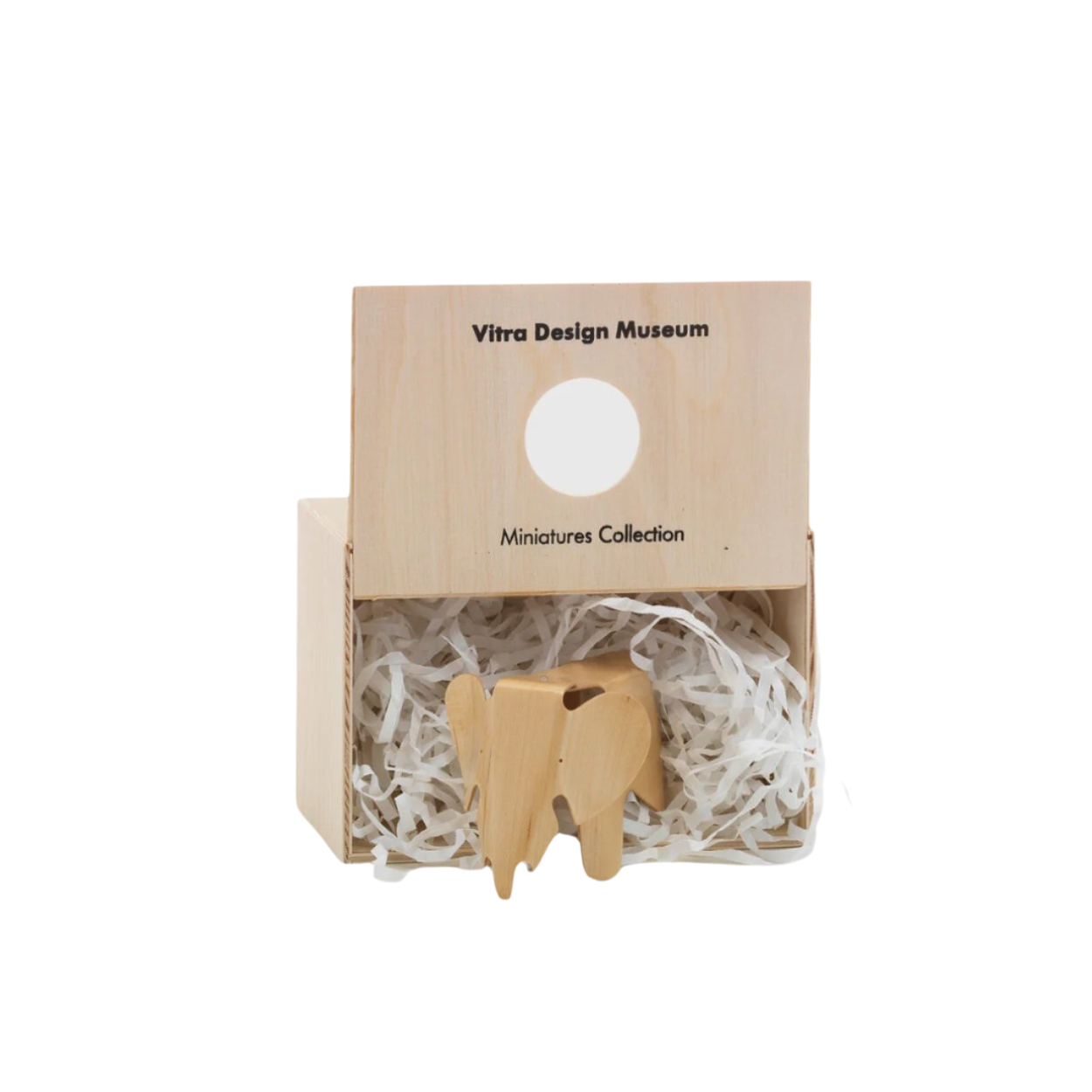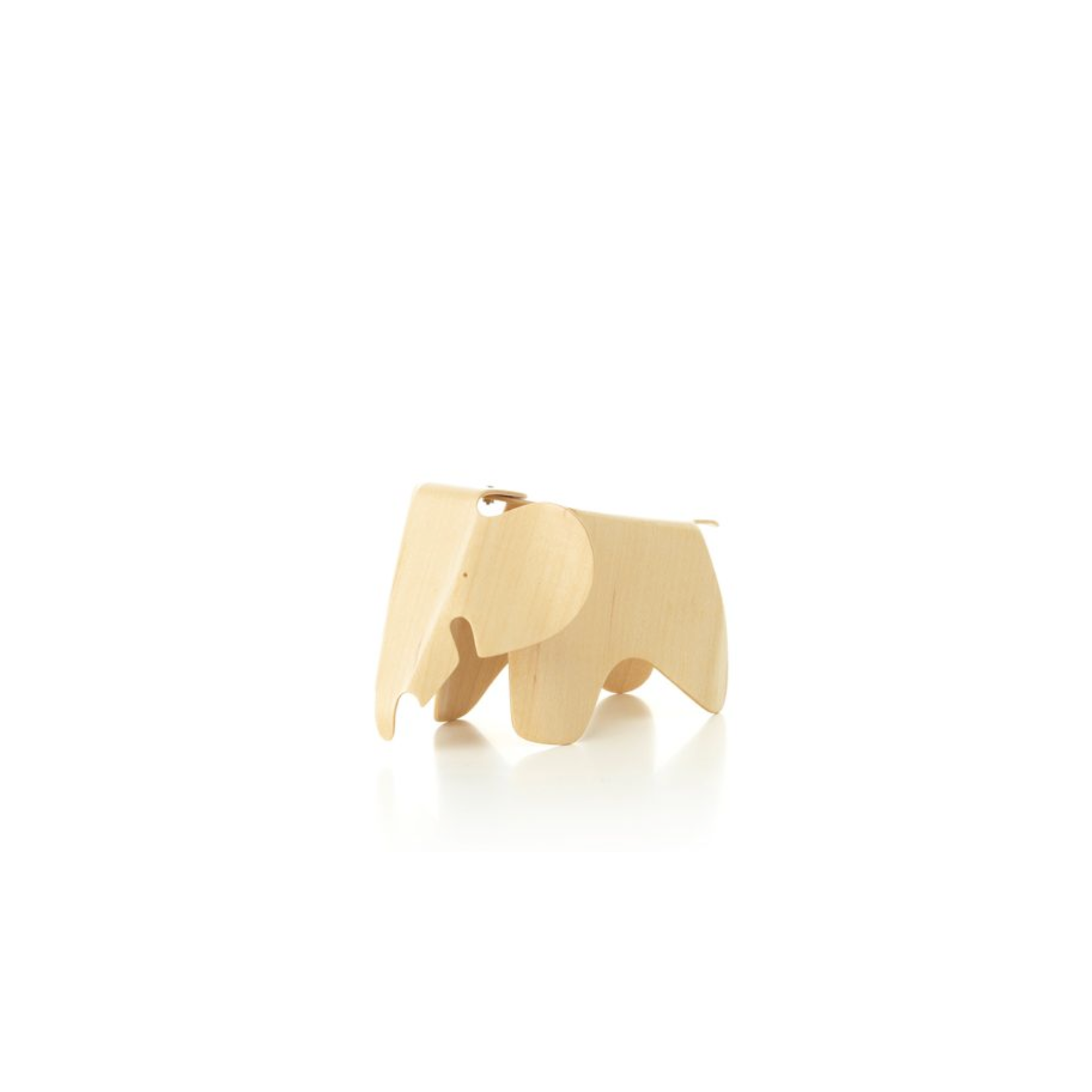
Vitra
Miniatures Plywood Elephant
Charles & Ray Eames, 1945
Description
In the 1940s, Charles and Ray Eames developed a groundbreaking method for molding plywood into 3D forms, leading to the creation of various furniture pieces, including the challenging Plywood Elephant with its tight angles and curves. Although only two prototypes were made, it was displayed at MoMA in 1945-46. In 2007, Vitra released a limited Collector's Edition, marking its first commercial production.
Details
Material Description:
- Scale: 1:6, 130 x 69 x 69 mm
- Material: Three-dimensionally moulded plywood, natural maple, nickle plated screw
Designer
Charles & Ray Eames, 1945

Charles Ormand Eames Jr., a nearly-licensed architect born in St. Louis in 1907, and Bearnice Alexandra “Ray” Kaiser, an abstract painter born in Sacramento in 1912, are cemented into the canon of 20th-century design. Since uniting in 1940, these partners in life and work have been internationally recognized at the forefront of the design, architecture, filmmaking, and furniture communities.
You may also like

